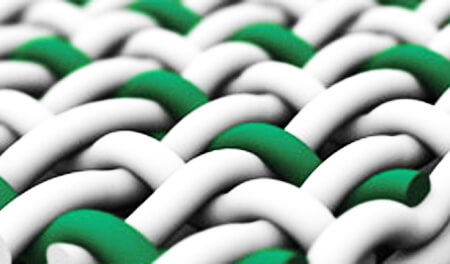
A paper machine forming fabric, often simply referred to as a "forming fabric," is a critical component of a paper machine that plays a central role in the papermaking process. It is a continuous belt-like structure made from synthetic materials such as polyester or polyamide. The forming fabric is responsible for transforming a dilute slurry of paper pulp into a continuous sheet of paper.

Here's how a paper machine forming fabric works:
1. Slurry Preparation:
The papermaking process begins with the preparation of a slurry composed of wood fibers (or other pulp sources), water, and various additives. This slurry is often referred to as the "stock."
2. Headbox Delivery:
The stock is pumped into a device known as a headbox, which distributes the slurry evenly across the width of the forming fabric. The headbox controls the basis weight, fiber orientation, and formation of the paper.
3. Forming Section:
The forming fabric is installed on the forming section of the paper machine, which is typically a large, flat conveyor belt-like structure. As the stock flows from the headbox onto the forming fabric, water begins to drain through the fabric, leaving behind a mat of fibers on its surface.
4. Drainage:
The forming fabric is designed with a specific pattern of mesh or holes that allows water to drain away from the mat of fibers while retaining the fibers themselves. This drainage process is crucial for reducing the water content of the mat and forming a continuous sheet of paper.
Key features and considerations for forming fabrics:
1. Fabric Design:
The design of the forming fabric, including its mesh pattern and material composition, is tailored to the specific paper grade and machine configuration. Different fabrics are used for various paper products, such as newsprint, tissue, or cardboard.
2. Mesh Density:
The mesh density of the fabric determines its drainage capacity. Fabrics with different mesh densities are used in different sections of the paper machine to optimize water removal and formation.
3. Surface Treatment:
Some forming fabrics are treated with coatings or materials to improve their wear resistance, release properties, and overall performance.
4. Fabric Maintenance:
Regular cleaning and maintenance of the forming fabric are essential to ensure consistent performance and paper quality. Fabric lifespan varies depending on the operating conditions and the paper grade being produced.
In summary, a paper machine forming fabric is a critical component that facilitates the formation and drainage of paper from a dilute pulp slurry. Its design and function are essential for achieving the desired paper characteristics and quality.